Abstract
A test was made of the susceptibility of 30 strains of Trypanosoma cruzi to chemotherapy with nifurtimox (Bay 2502) and benznidazole (Ro 7-1051). The strains had previously been classified as type I, II, or III according to their morphobiological and isoenzymic characteristics. Three type I strains, 14 type II strains, and 13 type III strains were studied. Mice were infected with 2 × 105 blood forms of these parasites and treated for 90 days with benznidazole or nifurtimox. All the surviving mice were submitted to parasitological tests (direct parasitaemia, xenodiagnosis, inoculation in new-born mice, and haemoculture) and serological tests (indirect immunofluorescence). As the latter remained positive in about 80% of the parasitologically negative animals, the cure rates were based on the more reliable parasitological tests. Type I strains displayed high susceptibility, type II strains showed medium to high susceptibility, and type III strains were highly resistant to both drugs. The fact that a particular strain type, with its own level of susceptibility, usually predominates in a given geographical area may explain the contradictory results after chemotherapy from different endemic areas.
Full text
PDF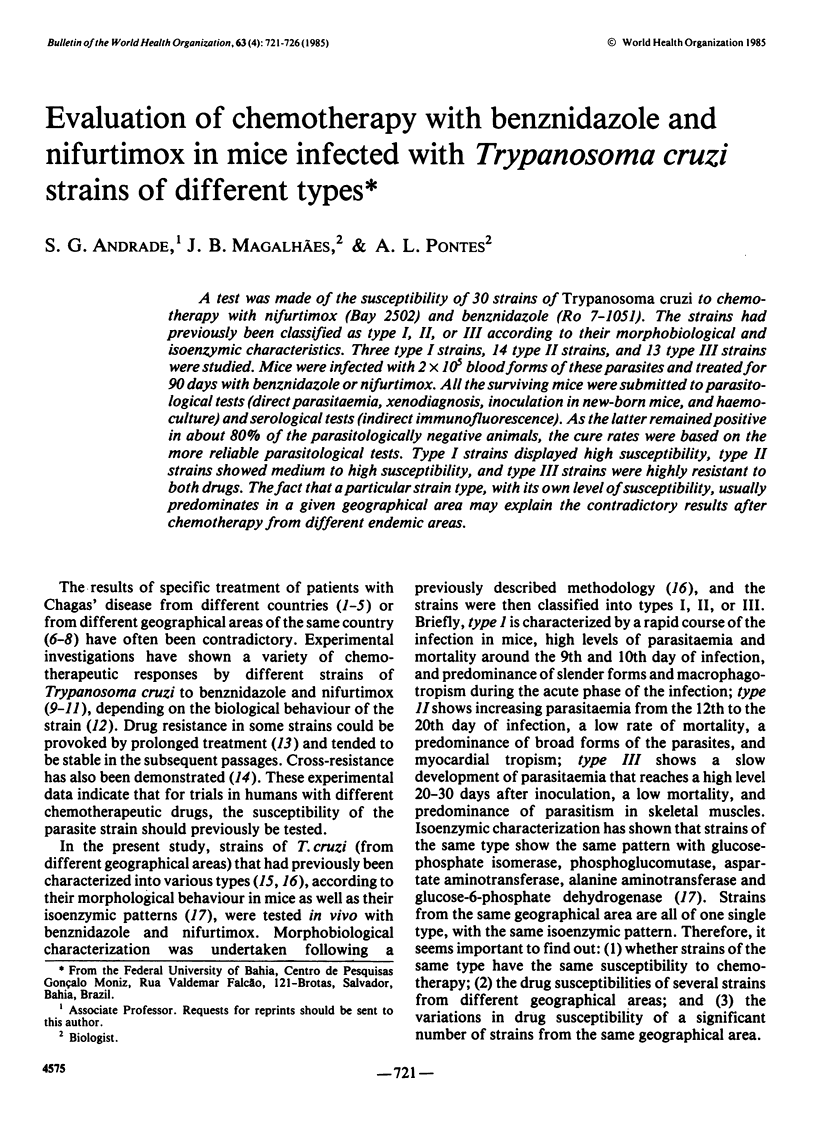
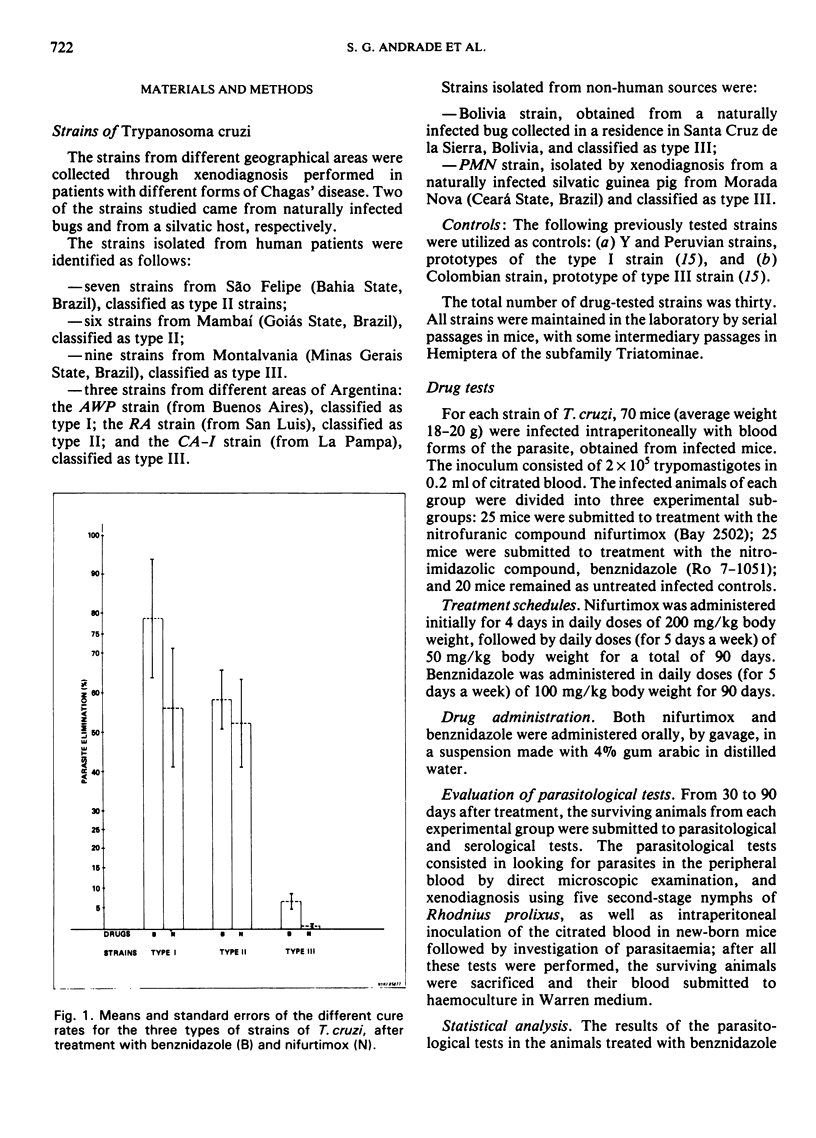
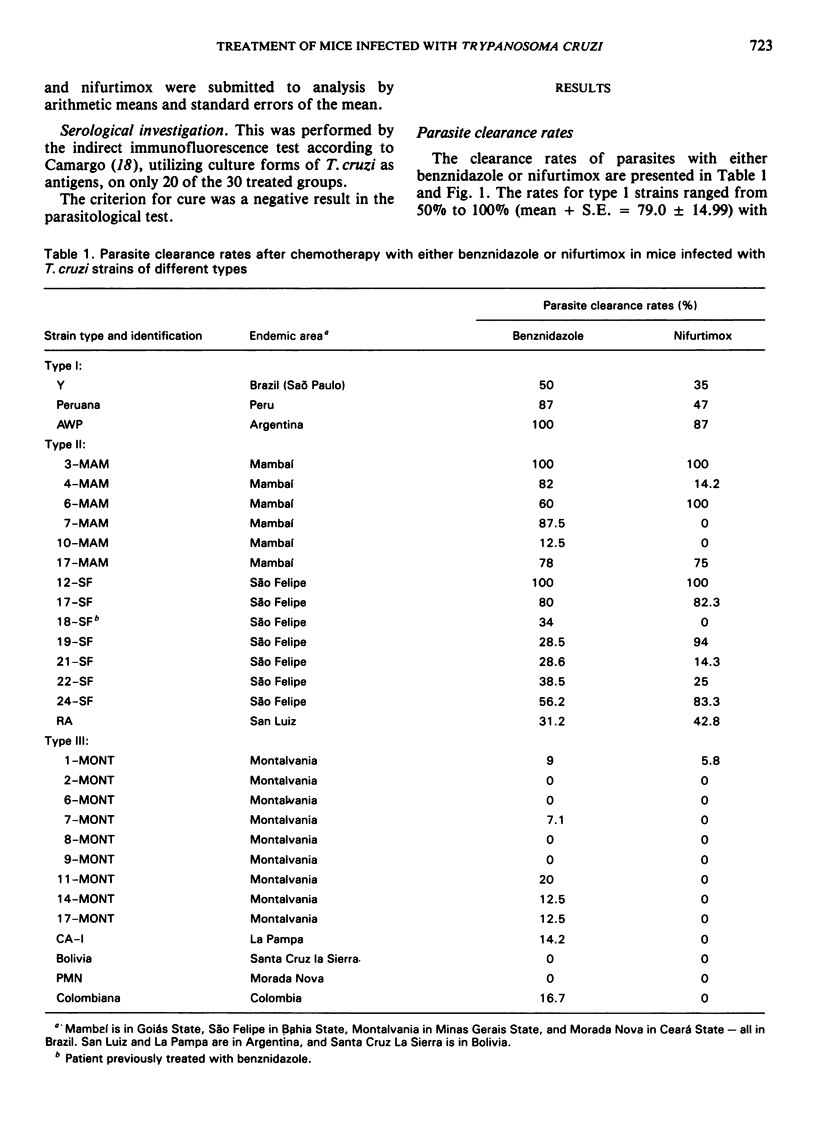
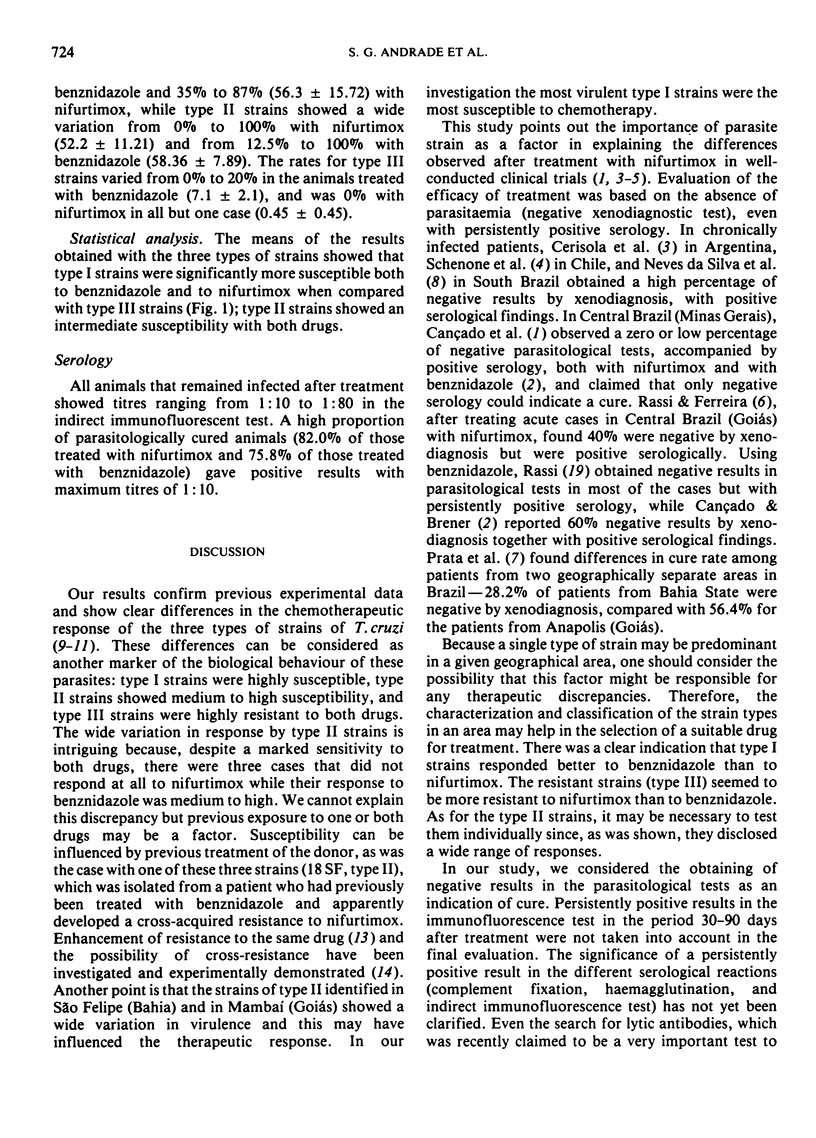

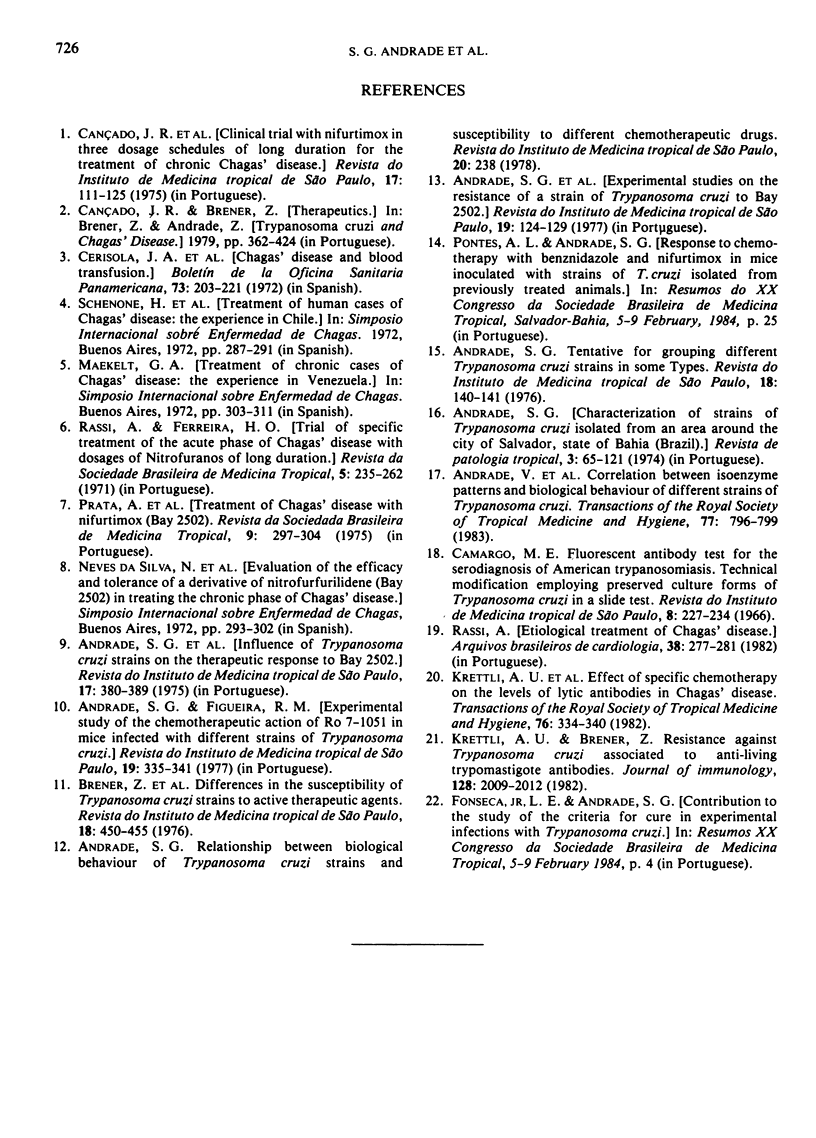
Selected References
These references are in PubMed. This may not be the complete list of references from this article.
- Andrade S. G., Andrade Z. A., Figueira R. M. Estudo experimental sobre a resistência de uma cepa do Trypanosoma cruzi ao Bay 2502. Rev Inst Med Trop Sao Paulo. 1977 Mar-Apr;19(2):124–129. [PubMed] [Google Scholar]
- Andrade S. G., Figueira R. M. Estudo experimental sobre a aço terapêutica da droga Ro 7-1051 na infecço por diferentes cepas do Trypanosoma cruzi. Rev Inst Med Trop Sao Paulo. 1977 Sep-Oct;19(5):335–341. [PubMed] [Google Scholar]
- Andrade V., Brodskyn C., Andrade S. G. Correlation between isoenzyme patterns and biological behaviour of different strains of Trypanosoma cruzi. Trans R Soc Trop Med Hyg. 1983;77(6):796–799. doi: 10.1016/0035-9203(83)90292-4. [DOI] [PubMed] [Google Scholar]
- Brener Z., Costa C. A., Chiari C. Differences in the susceptibility of Trypanosoma cruzi strains to active chemotherapeutic agents. Rev Inst Med Trop Sao Paulo. 1976 Nov-Dec;18(6):450–455. [PubMed] [Google Scholar]
- Camargo M. E. Fluorescent antibody test for the serodiagnosis of American trypanosomiasis. Technical modification employing preserved culture forms of Trypanosoma cruzi in a slide test. Rev Inst Med Trop Sao Paulo. 1966 Sep-Oct;8(5):227–235. [PubMed] [Google Scholar]
- Cancado J. A., Salgado A. A., Marra U. D., Alvares J. M., Machado J. R. Ensaio terapêutico cl'inico na doença de Chagas crônica com o nifurtimox em três esquemas de dura ça prolongada. Rev Inst Med Trop Sao Paulo. 1975 Mar-Apr;17(2):111–127. [PubMed] [Google Scholar]
- Cerisola J. A., Rabinovich A., Alvarez M., Di Corleto C. A., Pruneda J. Enfermedad de Chagas y la transfusión de sangre. Bol Oficina Sanit Panam. 1972 Sep;73(3):203–221. [PubMed] [Google Scholar]
- Krettli A. U., Brener Z. Resistance against Trypanosoma cruzi associated to anti-living trypomastigote antibodies. J Immunol. 1982 May;128(5):2009–2012. [PubMed] [Google Scholar]
- Rassi A. Tratamento etiológico da doença de Chagas. Arq Bras Cardiol. 1982 Apr;38(4):277–281. [PubMed] [Google Scholar]


